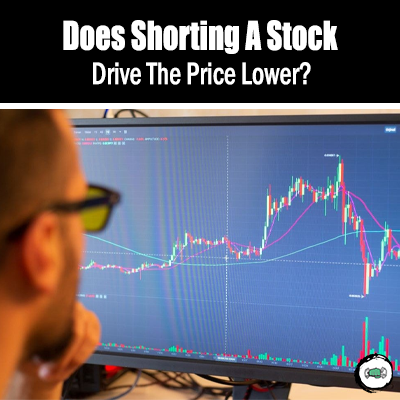
By
James
Updated on
Buying and selling stocks with a potential decline in price is a vogue in the stock market; however, it is crucial to learn about the risks and benefits.
Shorting or ‘short-selling’ as a strategy heavily depends on speculation, foresight, and hedging, and that’s why it has potential risks. When experienced investors like hedge fund managers speculate a drop in stock prices, they borrow the said stock, sell it and buy it back at a lower price to earn profits. Moreover, shorting usually involves stocks that aren’t directly owned by the investor but are rather taken as a loan from a broker, so betting on a drop involves higher risk.
However, many people believe that shorting a stock is a dependable way of driving the price lower. To address this statement, we will be looking at short selling in detail and exploring if it really is a good way of making money. Read on.

What Exactly Is Shorting Or Short Selling?
Generally speaking, short selling is a stock market technique where an investor borrows a stock when the price drops and sells it, only to repurchase the same stock. On making the purchase again, they return the stock to the lender and keep the profit.
So, most investors basically wager through market research and intuition that the price of the stock will decline. Thus, a short seller is usually a very experienced investor or trader who knows their way around short sales and financial markets. For example, if you think a stock is overvalued and will likely drop in price, you must purchase and sell it after borrowing. And once it shows a much lower price, you can buy it back and return it to your broker while keeping the full profit.
Furthermore, short selling stocks are usually undertaken by speculators and hedgers for different reasons. While a speculator sells short to capitalize on declining share price, hedgers stock short to protect assets and hedge funds and minimize loss.
What Are The Risks Of Short Selling?
Before getting involved in a short sale and becoming a short seller, it is important to be aware of the different risks that it entails. If things get really bad, then the investor might actually lose their entire investment while shorting a stock or borrowing shares. Investors can also end up owing more money to their brokers, thus suffering serious losses.
However, taking huge risks can often lead to amazing profits in share prices when things go as planned. Short selling requires good knowledge of personal finance and an understanding of the open market. Even though hedgers are the most active short sellers, speculators often lead the market due to their relative freedom in terms of losses. And since shorting a stock involves significant risks, only seasoned investors become short sellers.
The other huge risk of short selling is what’s called a ‘short squeeze’ where stocks with high ‘short interest’ (that is, a heavily shorted stock) suddenly increase in price. This, in turn, initiates a steep ascent of the stock price as many investors continue repurchasing them to minimize net loss and maintain short positions.
So, it is better not to assume that a short seller will be able to buy back short stocks at the desired higher price.
What Is A Short Squeeze?
Every investor must use a margin account for the short selling cycle–it is an account where the broker lends stocks and funds of a particular company to the investor. So, the short seller must monitor their specific margin account to check if there are sufficient funds to cover the stock’s price and maintain the short position.
If the particular short stock suddenly increases in price, the investor has to add more funds to the margin account to cover the cost, or the broker might forcibly close the short position. This unforeseen ride in stock prices is called a ‘short squeeze.’
Since the given stock can continue increasing in value, short sellers can end up owing money to brokerage or lose the outstanding shares due to a short squeeze.
Does Shorting Drive The Stock Price Lower?
After considering the technical aspects and risks of shorting a stock, even a newbie can conclude that short trade doesn’t necessarily lower the stock price. Since a very small percentage of institutional investors purchase shares for short selling, it has almost no power in a stock’s decline. Usually, it is the long position holders panicking when there’s a short sale that decreases the stock price.
The statement that short sellers are able to manipulate the market by buying stocks and selling short is a myth. Short selling, as the name suggests, can only work for a short term. However, selling shares and holding them down for a long time is not something short sellers can do.
Fluctuations in demand and supply are the only aspects that can affect the price of the stock. Simply speaking, when there is a higher demand than supply rate, the current price of the share increases. However, if the supply is greater than the demand, it is likely that select stocks will decrease in price.
Therefore, short selling results from a price drop due to an imbalance in supply and demand when short sellers are willing to purchase and sell shares. When there are a higher number of borrowed shares being sold, the stock price further decreases. On the other hand, when short sellers perceive a lower chance of profit, they buy back the borrowed shares to lock whatever money they’ve made.
How Does Short Selling Affect The Market?
Even though short selling doesn’t drive stock prices lower, it can sometimes affect the stock market if done for a long time. Shorting stocks typically involve high risks, and only those investors who are willing to stake money to get profitable gains engage in shorting stocks.
However, purchasing and re-selling stocks while the prices are low doesn’t guarantee that the investors will be able to gain any profit due to their volatile nature. So, it is better to find ways of profiting in different avenues of the open market before engaging in shorting stocks.
Theoretically, an investor can profit up to 100% by shorting a stock since the price of a stock can fall to $0. But the actual profit will be much less than that because buying most stocks requires more money, additional borrowing costs, and margin interests.
How To Spot Short Selling?
Most stocks on the market have a certain percentage of a short position, which can be seen in the statistics shared by various financial websites like Yahoo! Finance. The key points to consider while looking for shorted stocks include short ratio, short percentage of float, short interest, short percentage of shares outstanding, and percentage of float shorted.
To find the above terms, visit a finance website and look for their statistics section. Here, you will also find share quotes and charts, which will help research the stock market.
When Is The Right Time To Short Sell?
Since there’s a significant risk involved due to the price of stock steadily increasing over time, many investors avoid short selling. To make more profits, an investor needs to be thorough in his market research and requires good timing, which is not possible during a short sale.
Typically, investors with who own stocks and funds prefer long-term investments that rise with time and provide an average, steady income stream. Short selling is only appropriate as a short-term strategy where investors can profit on stocks and other securities and exchange commissions when publicly traded companies are financially struggling.
Moreover, if you’re convinced that a stock is certainly overvalued and has a chance of succumbing to downward pressure, shorting may make you lots of money. It can also be fruitful in cases of a protracted bear market and stock market crashes.
What Is Naked Short Selling?
It is a general stock market rule that investors cannot engage in short selling unless they borrow adequate shares or prove they have enough funds to utilize the clearing time. This window includes the trading day and two additional business days to process the trade. However, investors can bypass this by using the illegal practice of naked short selling.
Naked short selling includes selling shares that are non-existent or not obtained via a brokerage. These investors hope to short a stock right before the clearing time closes and the initial sale is processed. And since this can cause huge damage to other parties in the sale, naked short selling has been banned in the U.S.
How Is Short Selling Different From Regular Investing?
While regular investing adheres to the general rules of the stock market, short selling has a different set of rules that investors must follow. For example, there are strict restrictions to shorting, such as prohibiting it when a company’s strike price goes below ten percent in a single day.
This stabilizes the sell order since damages and losses incurred by a short sale are often infinite. Thus, only veteran, experienced investors risk investing their money in stock for selling short.
Less Riskier Alternatives To Short Selling
Buying a put-option on a stock is a safer alternative since it gives the investor or trader the right to sell it at a strike price but not the obligation to do so. In case the stock increases in price instead of declining, the investor can minimize the damage with the money paid for the put option, called the ‘option premium,’ plus a commission.
However, the amount that will cover the damages will depend on the strike price and whether the put option has an expiration date. If the strike price is high and the expiration date is long, then the option premium will be higher, thus effectively reducing risks.
Different Costs In Short Selling
Besides trading costs and ‘securities and exchange commission,’ there are other costs that an investor or broker should bear while engaging in short selling. Some of them are as follows:
1. Stock Borrowing Costs
Often, buying stocks from big or global companies that are in high demand is difficult due to higher rates of short interest or limited floats. In this case, you must pay what is called a ‘hard-to-borrow’ fee based on an annual rate for those willing to buy their stocks only for short selling. However, this borrowing cost can be quite high, especially if the short trade is open on a few stocks.

2. Margin Interest
Since short selling is undertaken using a margin account, the investor must pay interest monthly or annually to continue short selling via the account.

3. Dividends And Other Costs
A short seller’s responsibilities don’t end with paying interest and borrowing costs; he also has to pay his share of dividends on each stock that is shorted. Moreover, investors need to pay for official events such as spinoffs and stock splits directly associated with the particular shorted stock.

Final Thoughts
Shorting or short selling is indeed a clever way of earning profits, but it is too risky for novices and other people interested in beginning their journey in the stock market. It is highly recommended to seek professional advice and do thorough market research if an investor seeks to try short selling.
However, you should also note that when shorting stocks is successful, it can offer a higher net profit short term than long-term investments. So, to answer the question– shorting stocks doesn’t lower the price, but it can earn you a decent gain if maneuvered properly.
That’s all on short selling stocks and their effect on the stock market. We’ll be signing off for now. Until then, research well and take precautions to prevent financial losses.
Goodbye!
About The Author

Reviewed by
James
James is a writer who is a self-confessed kitchenware and coffee nerd and a strong advocate of Sundays, good butter, and warm sourdough.
Related Posts
[wp post shortcode here]
